- Antipasti
- Bella Italia
- Dessert
- Drinks
- Favorite Italian recipes
- Main courses
- Pasta
- Pizza
- Side dishes and salad
- Tips & Knowledge
Pasta dough – make your own Italian pasta
Making pasta yourself is very easy. All you need for original Italian pasta is eggs, flour and salt. And of course a pinch of Amore.
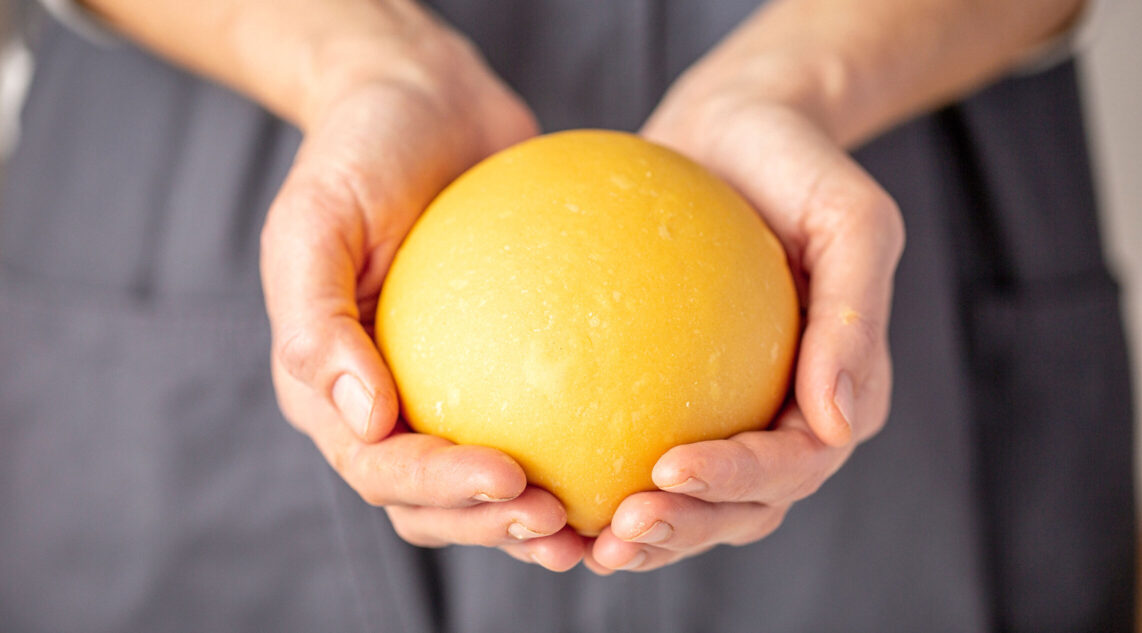
Schritt für Schritt durch´s Rezept
- Step 1Sieve the pasta flour onto a work surface. This creates a mountain. Form a hollow in the middle. Pour the eggs and a pinch of salt into the hollow and gradually stir into the flour with a fork.
- Step 2Knead the dough with your hands until it is homogeneous. If the dough is too hard and cannot be kneaded properly, add water drop by drop.
- Step 3The dough is ready when it is smooth and elastic but not sticky.
- Step 4Shape the dough into a ball, wrap in cling film and leave to rest for at least 30 minutes and up to a maximum of 3 days.
- Step 5Now roll out the dough (using a pasta machine or rolling pin) and cut into the desired shape.
- Step 6Cook the pasta from this dough in plenty of boiling salted water. When the pasta floats to the top, it is ready.
- Step 7Important: Never leave pasta dough lying around for a long time, otherwise it will become brittle!
Italian pasta dough – step-by-step instructions
Ingredients for perfect pasta dough:
The choice of ingredients determines the quality of the pasta later on. Your personal taste also plays a role in the choice. The basic recipe is simple, but can also be changed.
Flour 405 or Tipo 00 in pasta dough
Yes, you can make your pasta with 405 flour. However, this is not really Italian. Italians use Tipo 00 flour, which has a high gluten content and is therefore perfect for pasta dough.
Semola or durum wheat semolina in pasta dough
In the basic recipe above, the pasta is made from flour only. However, you can also choose a 25-75 or 50-50 ratio of durum wheat semolina and wheat flour. Even a dough made only from durum wheat semolina is possible. As already mentioned, it all depends on your preferences.
The rule is: the more durum wheat semolina, the rougher the pasta will be. The more flour, the finer.
If you opt for a mixture with durum wheat semolina, choose the Italian product here too, semola di grano duro. Semola is ground finer than German durum wheat semolina and therefore ensures better pasta results.

Egg in pasta dough
The rule of thumb for good pasta dough is: use 100 grams of flour and 1 egg per person. However, many Italians add extra egg yolks to the dough. This makes it more yellow and, above all, more elastic.
Pasta dough without egg
Of course, it is also possible to make vegan pasta dough, i.e. completely egg-free. This type of pasta is very common in Italy and is often made from semola, the Italian durum wheat semolina. You can find a good recipe for this here on the blog.


Drying and preserving pasta dough
Pasta made from egg dough can also be dried well. To dry them, lay them out on a floured work surface or a baking tray. Long pasta can also be hung over a broomstick or on a real pasta dryer. It is important that the pasta does not stick together when drying and that it really dries through. This should be the case after 2 days at the latest. The dry pasta can then be filled into airtight containers.
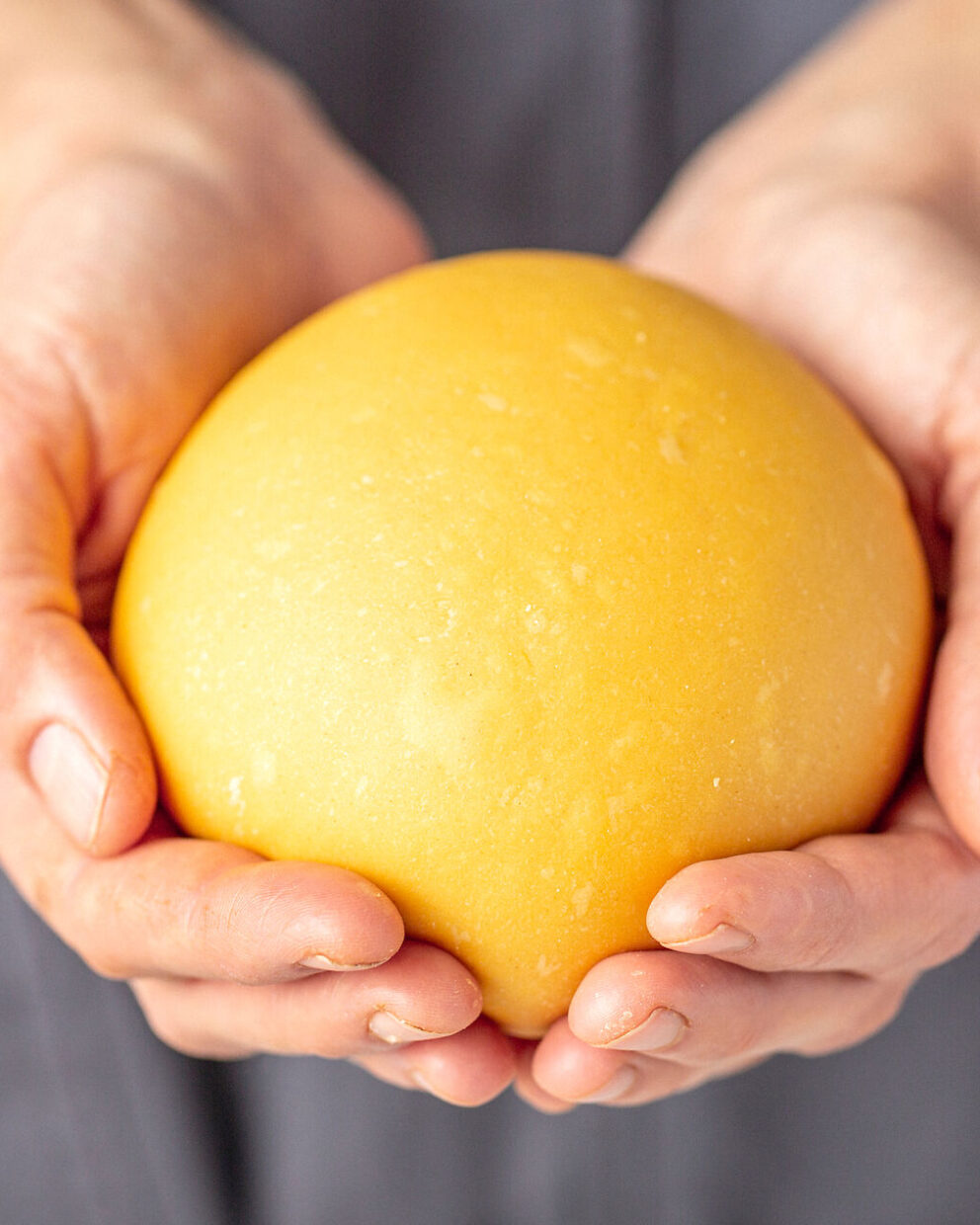



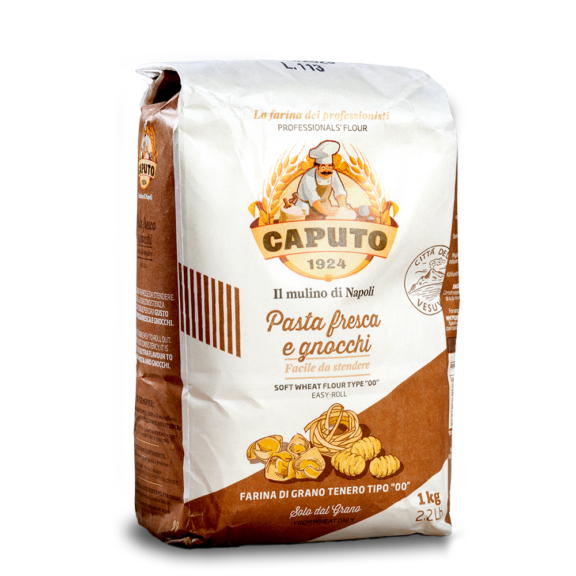
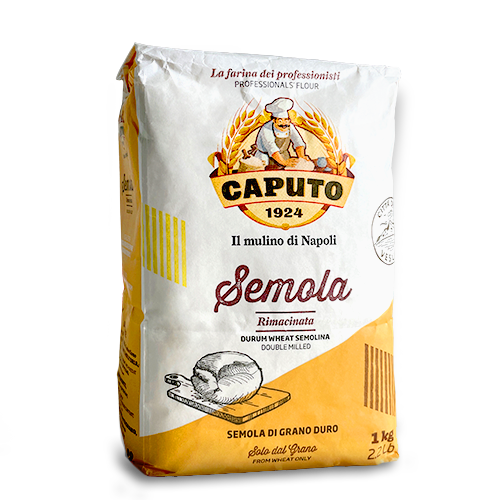









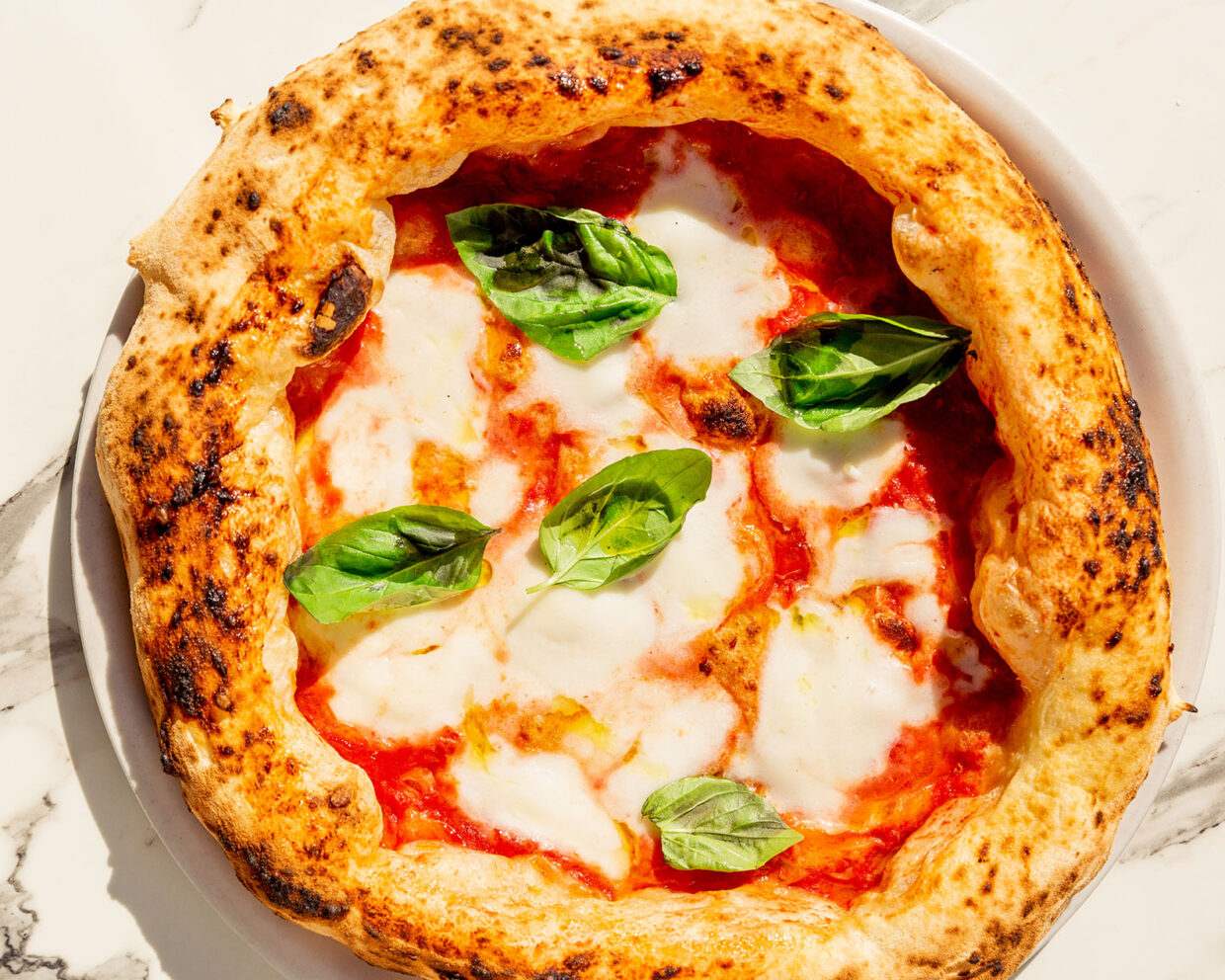
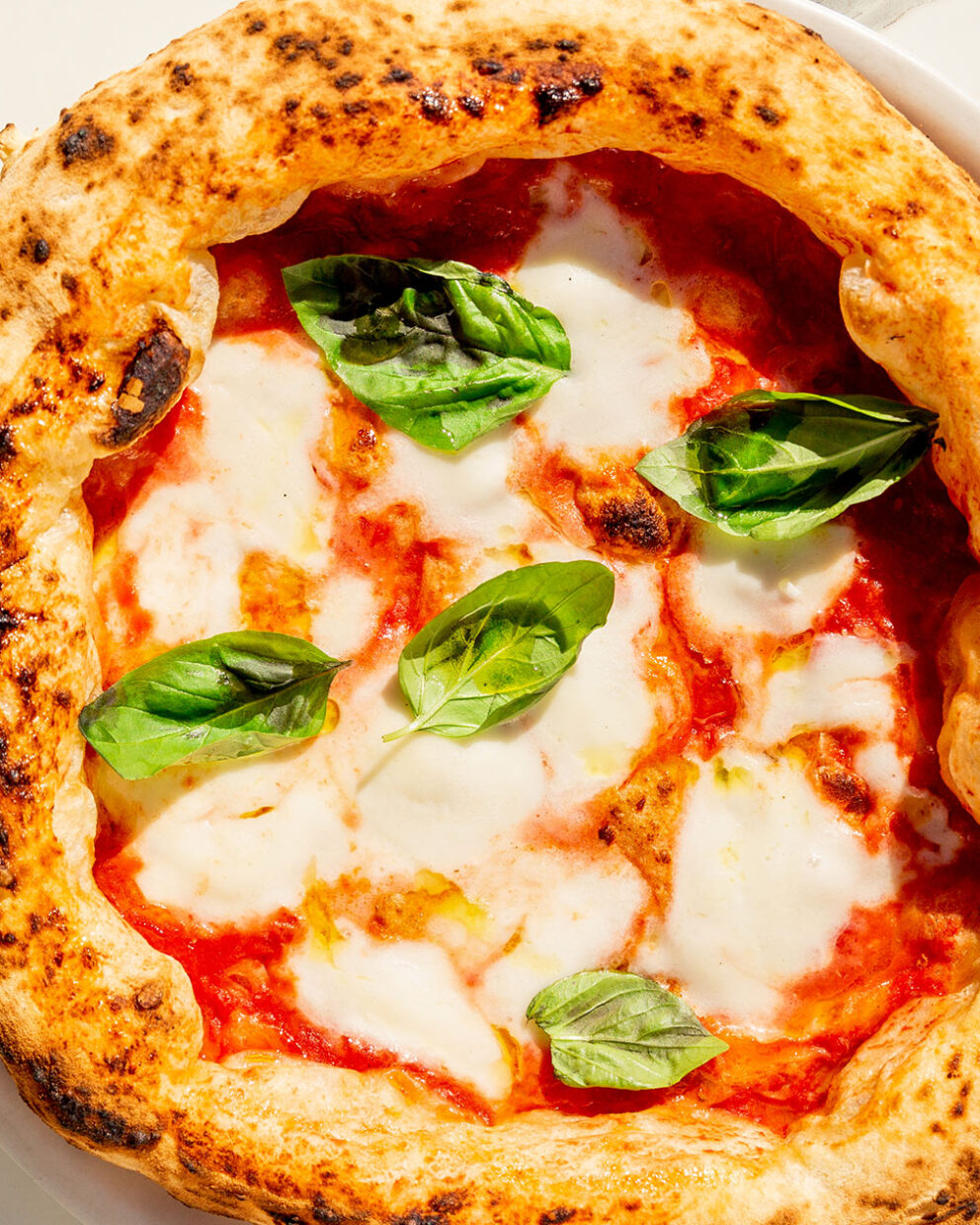
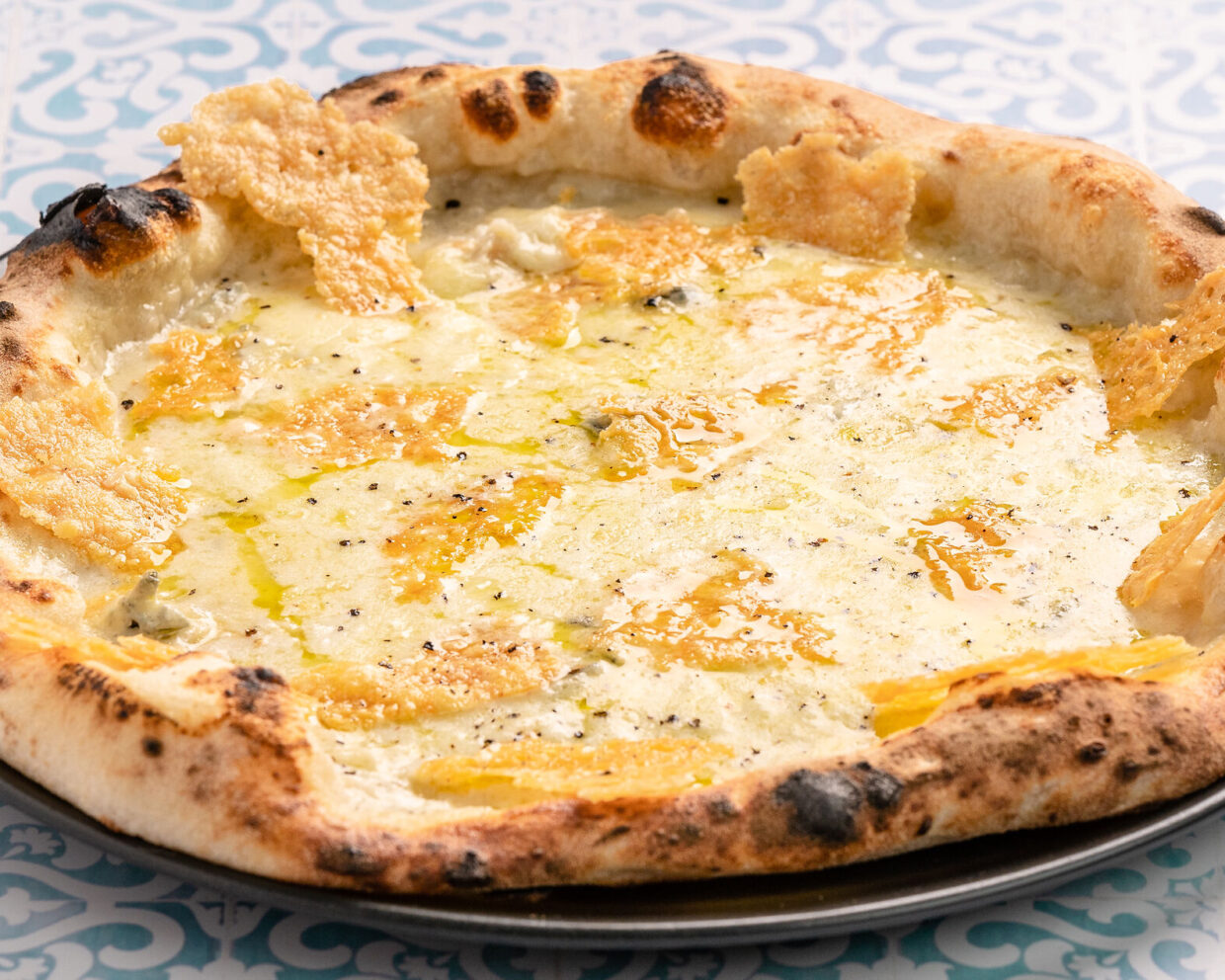
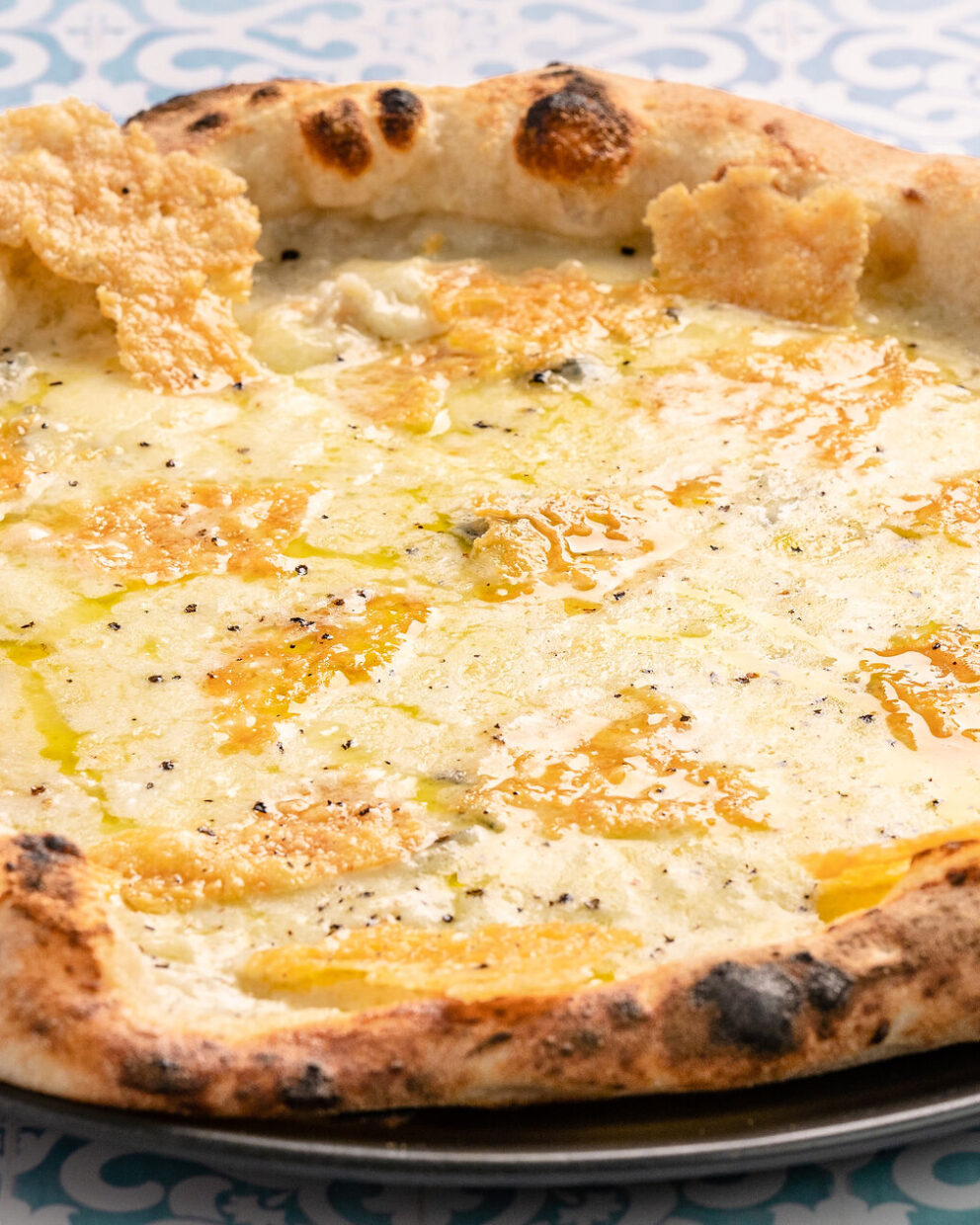
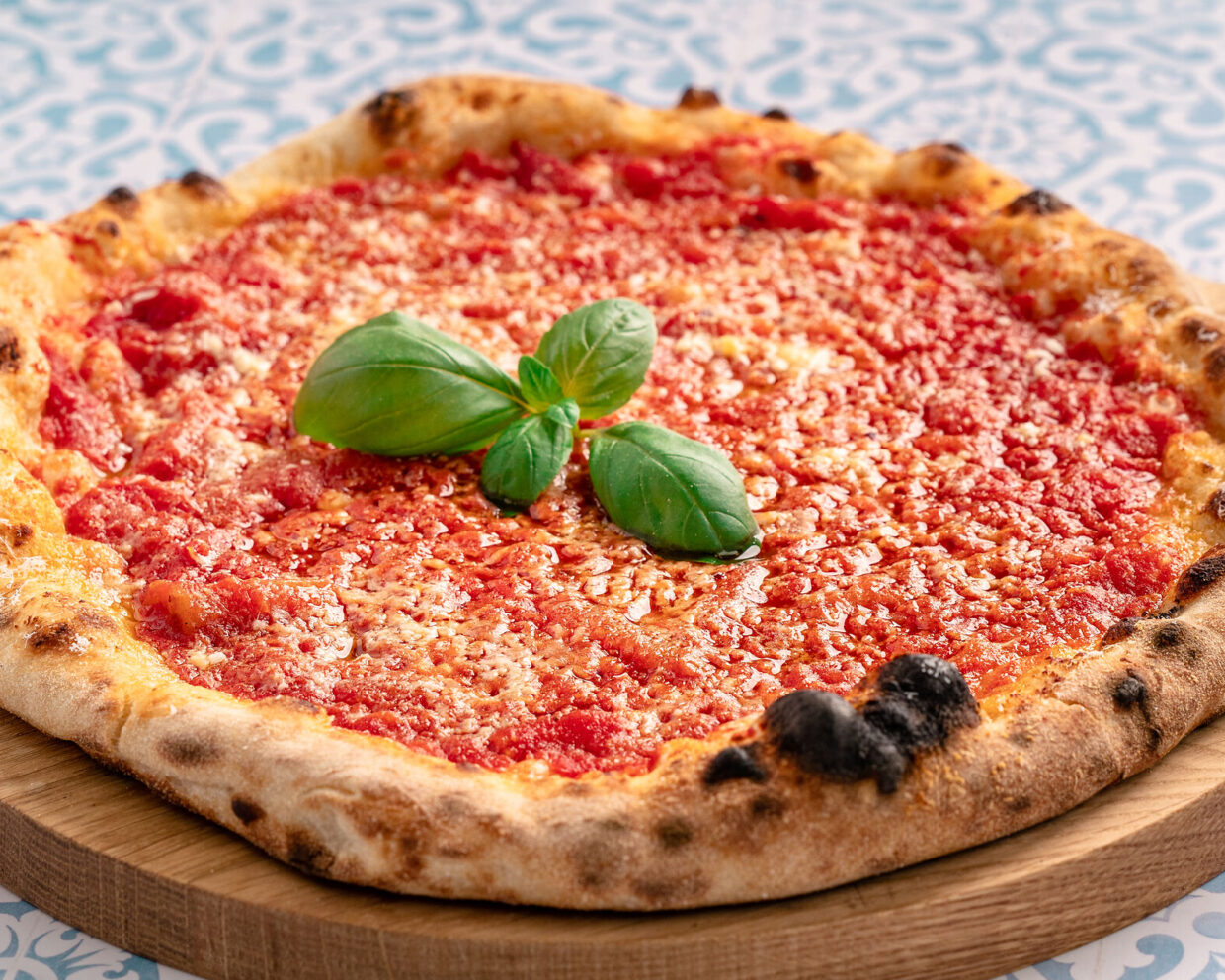

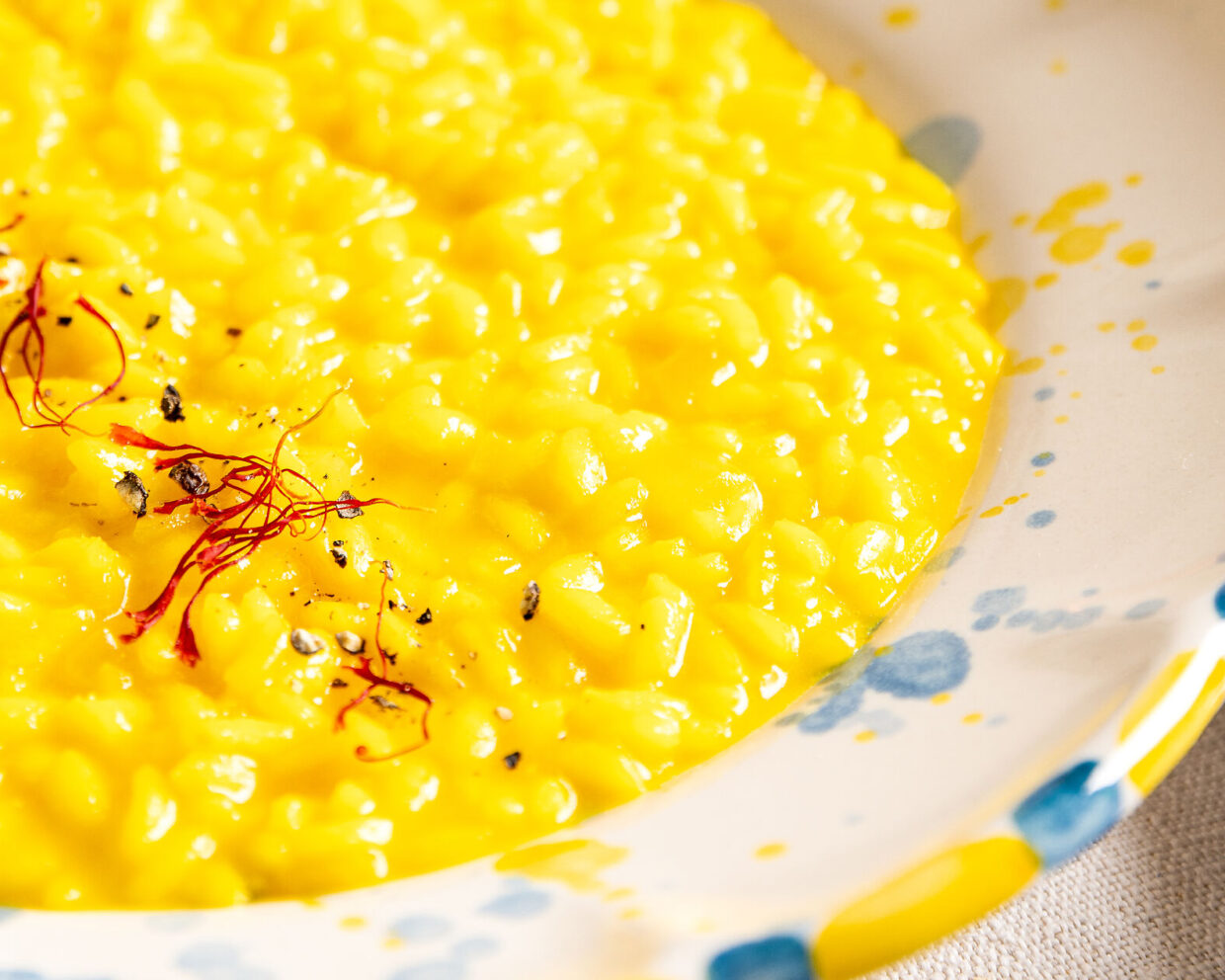
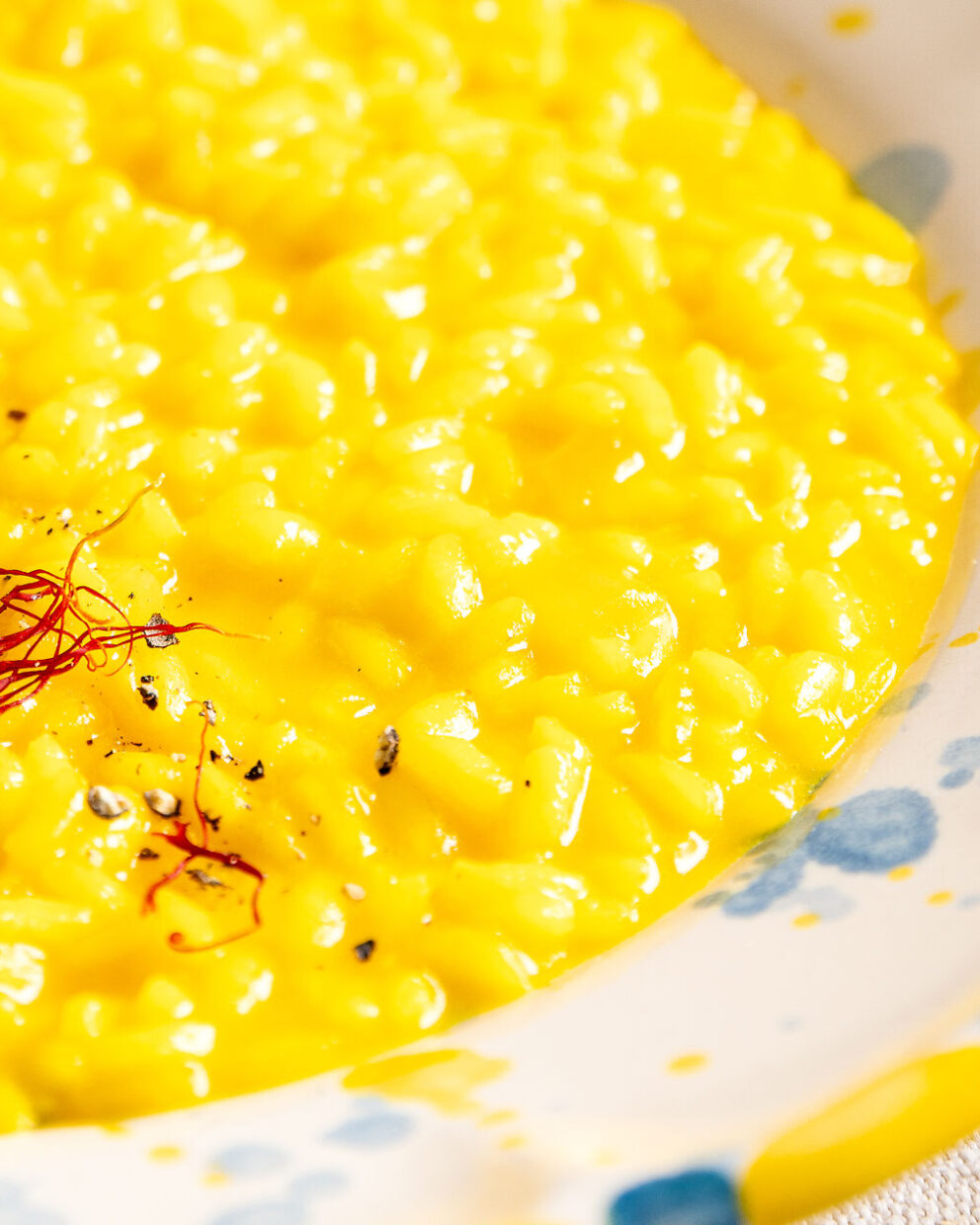
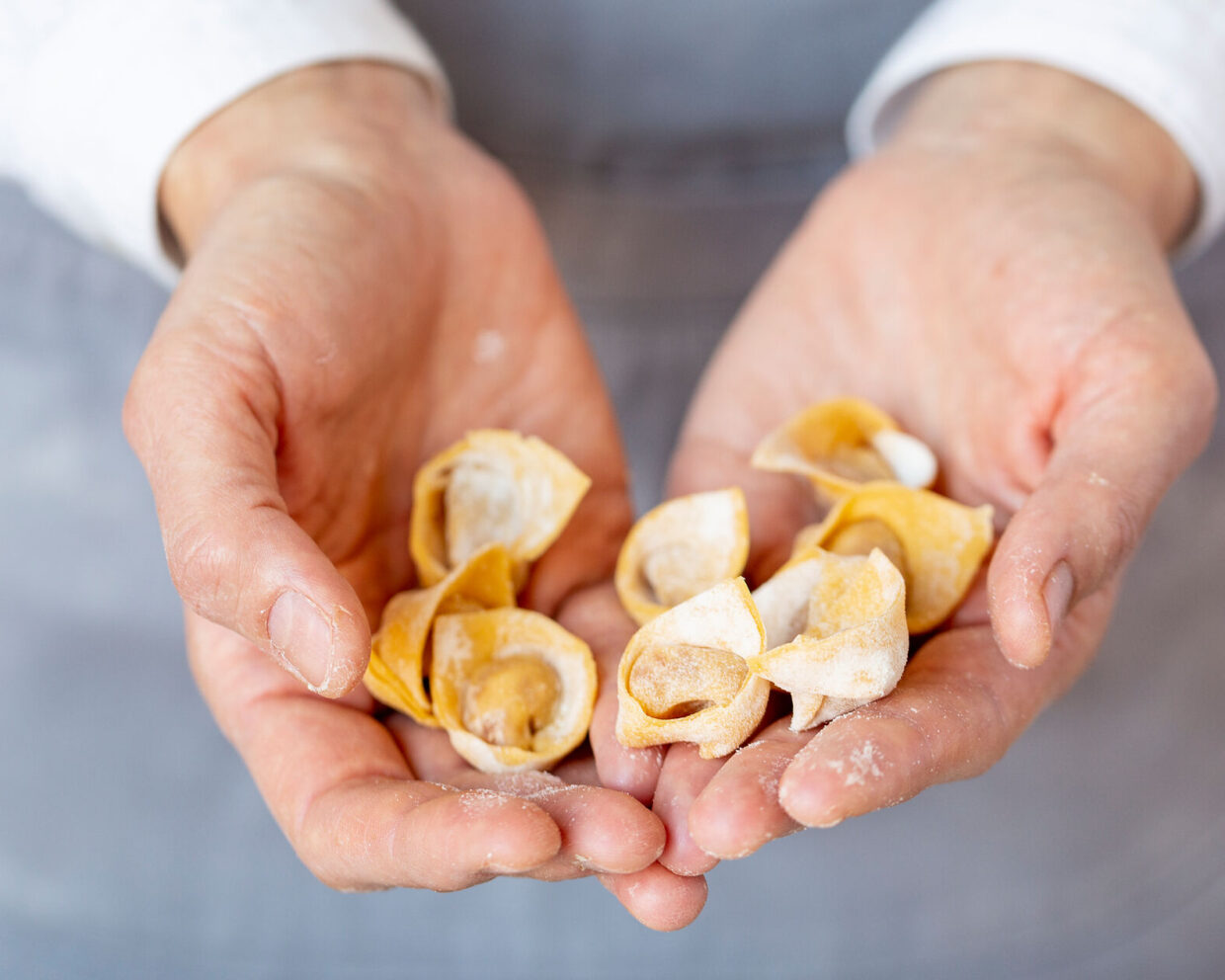
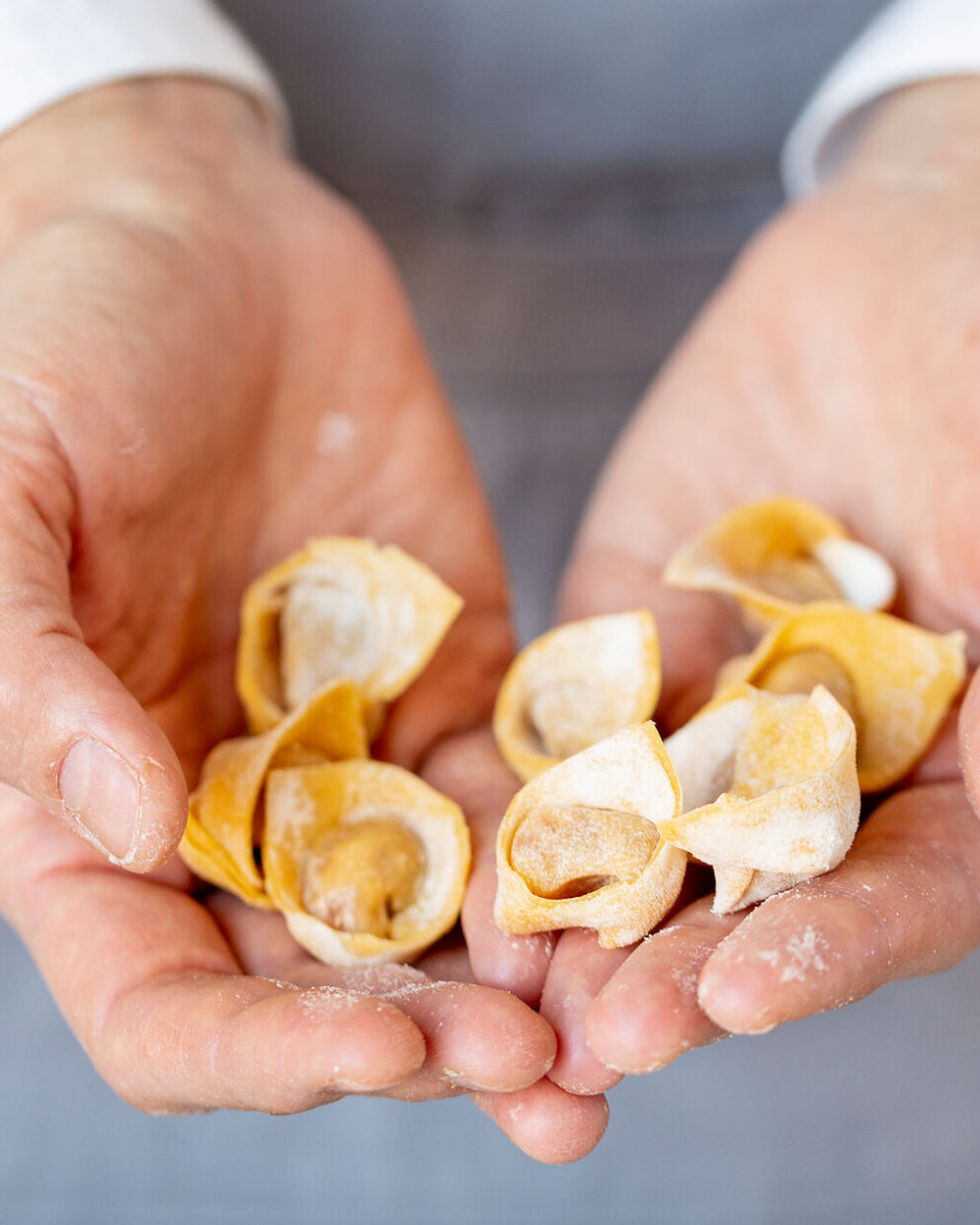
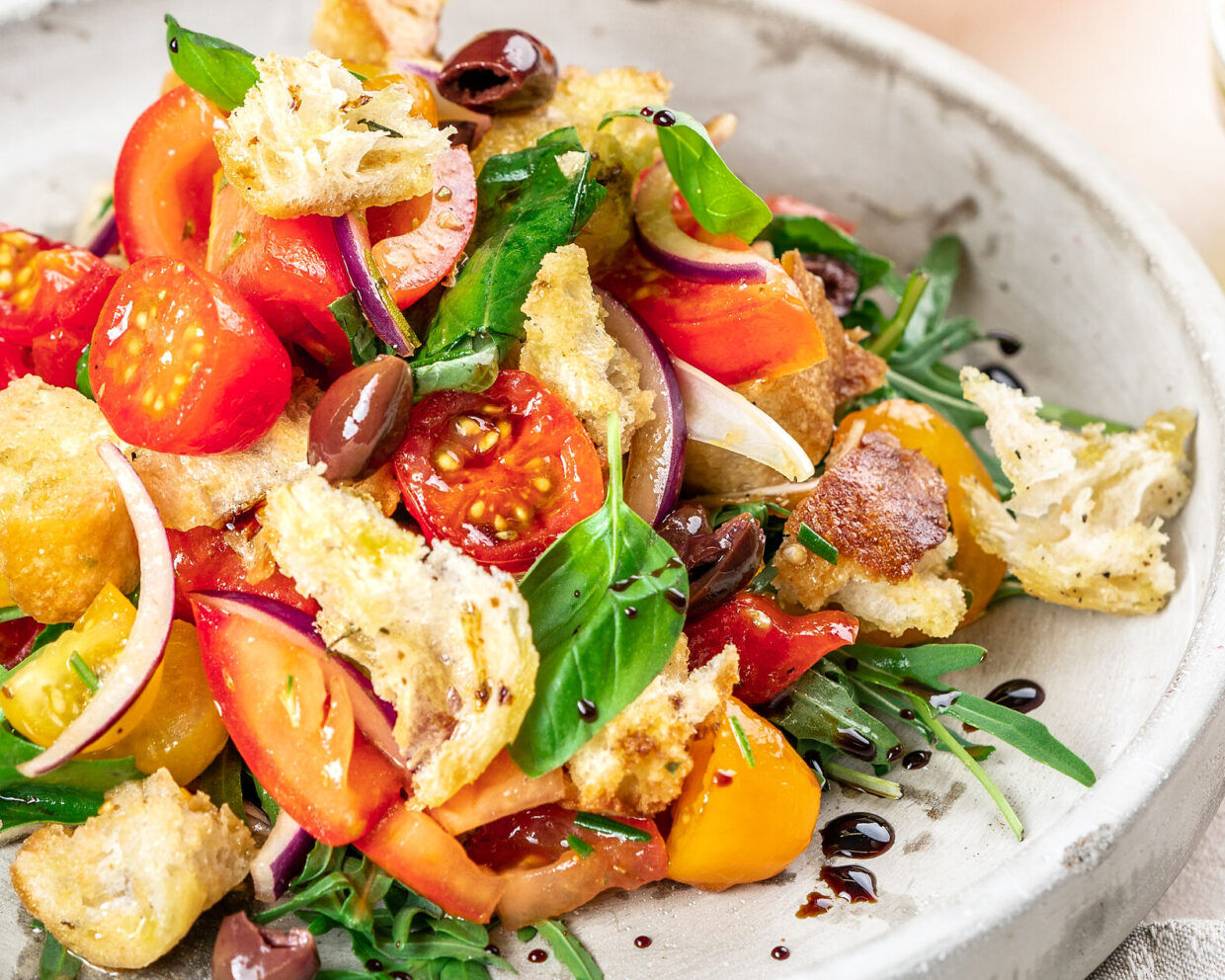
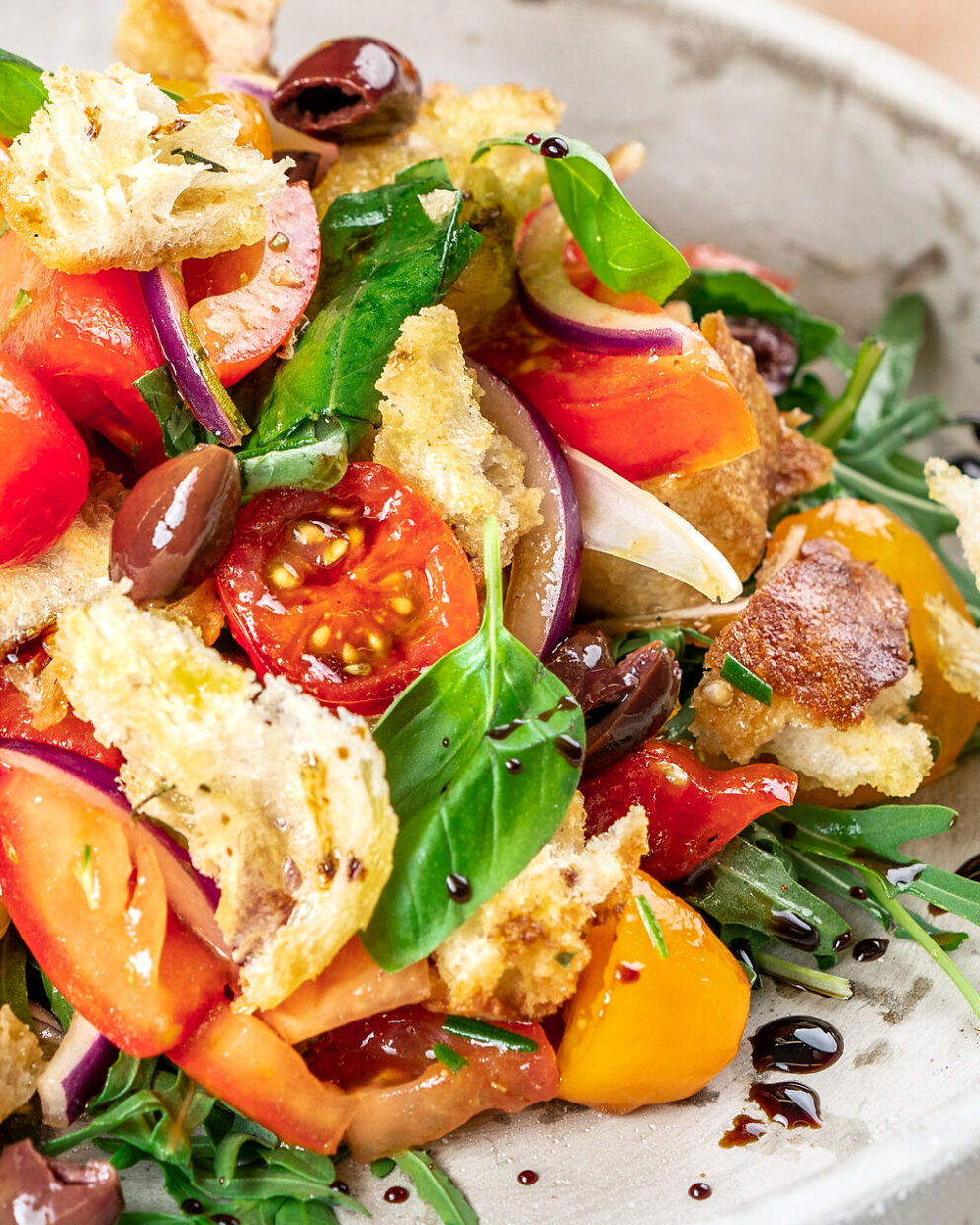
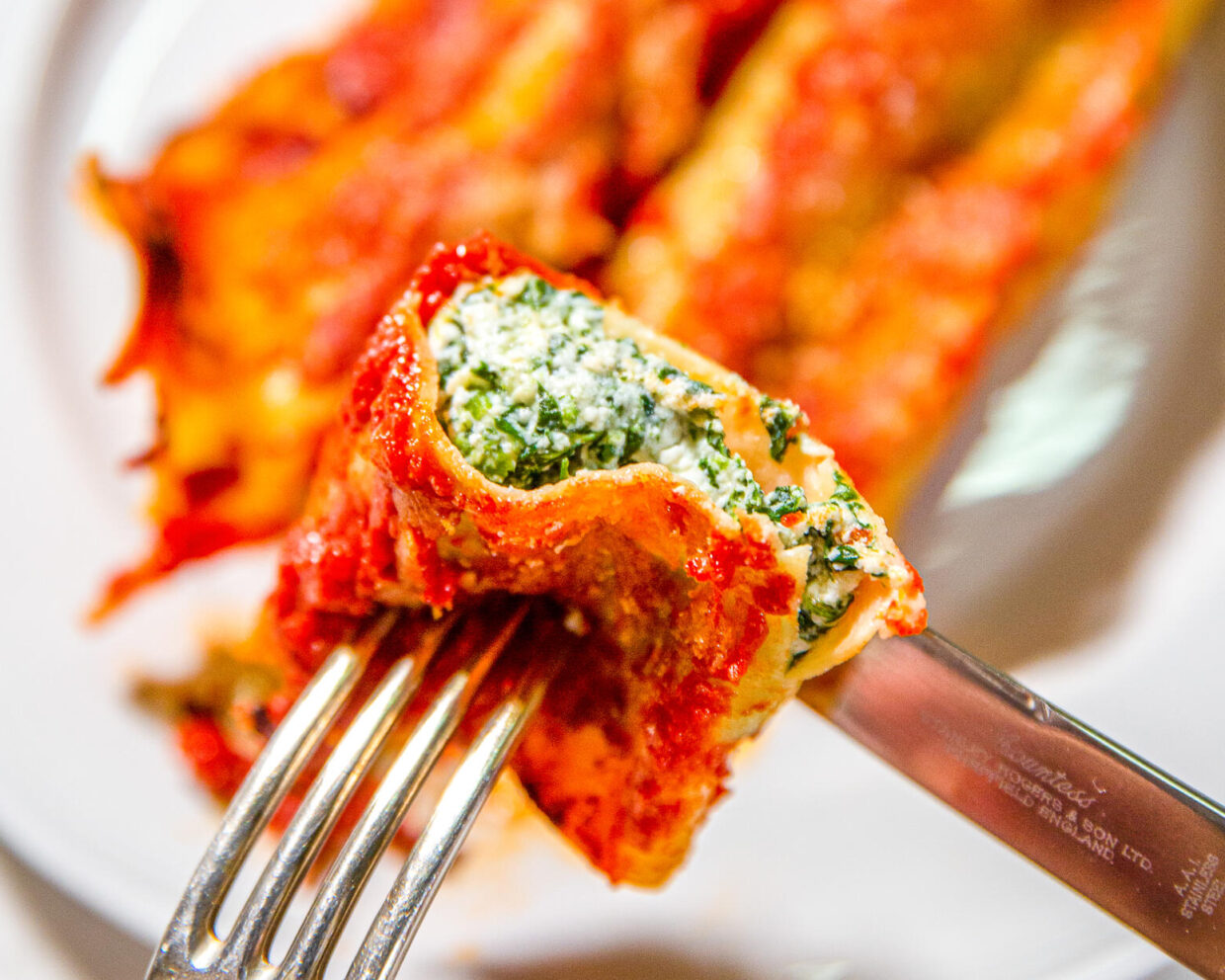
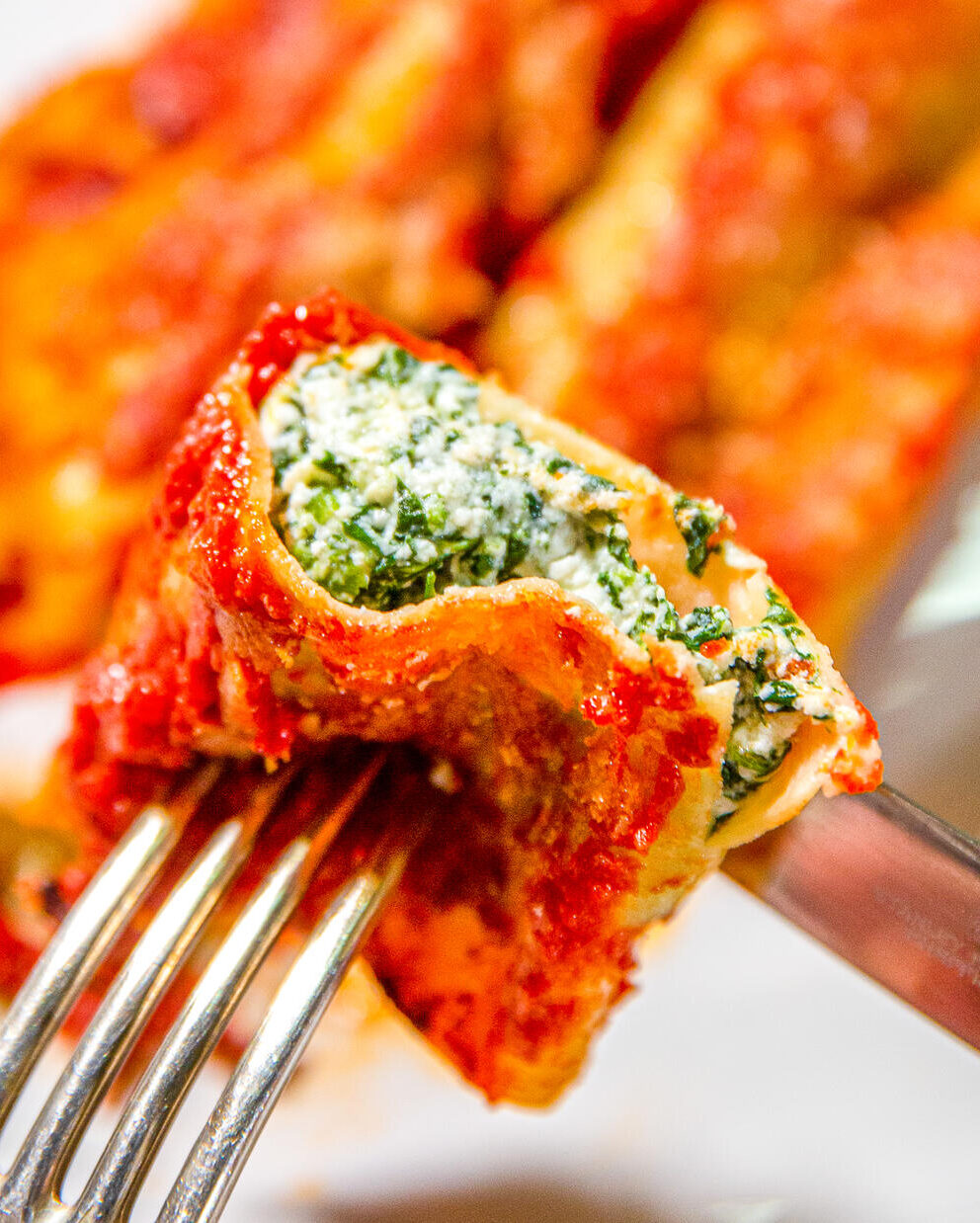
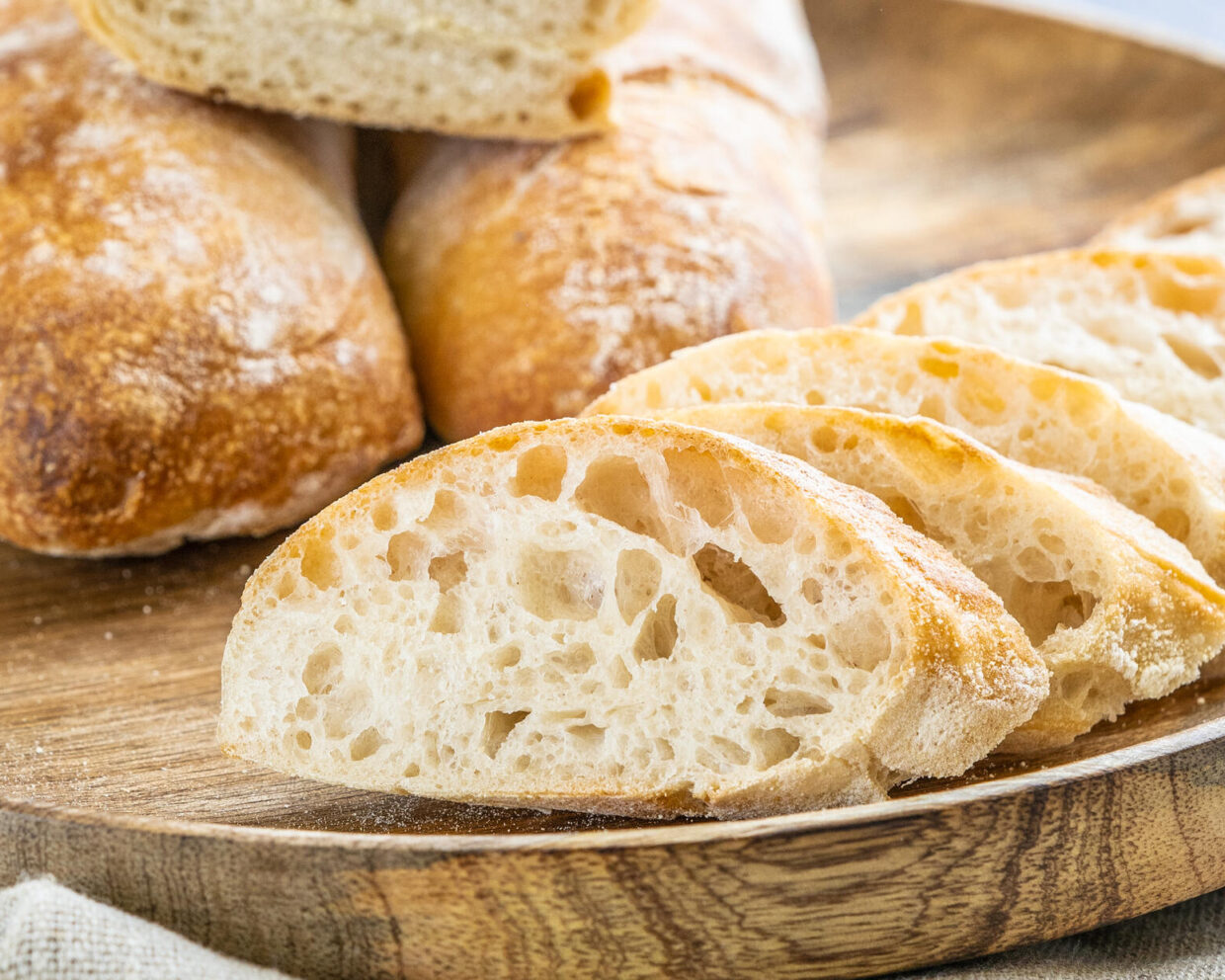
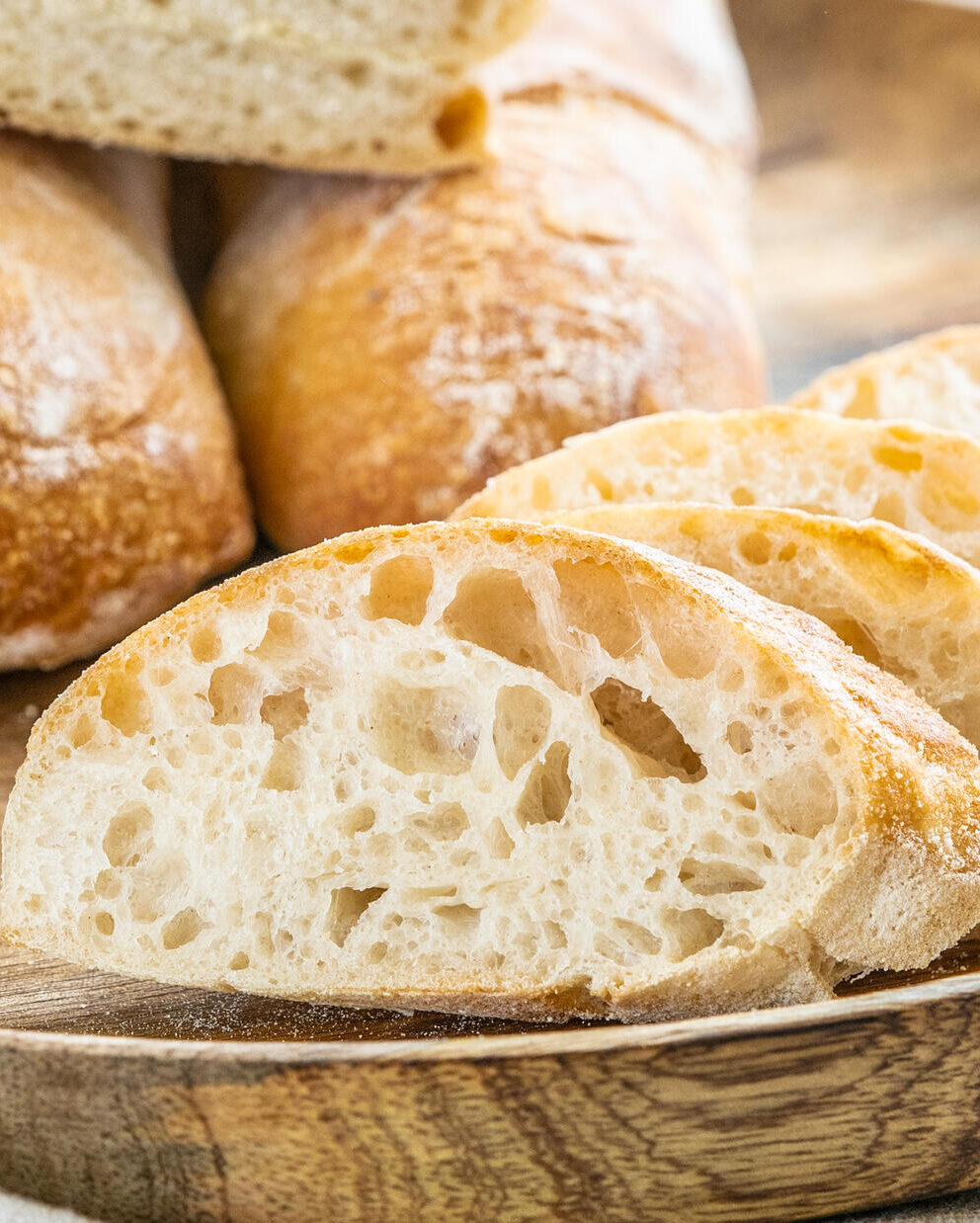
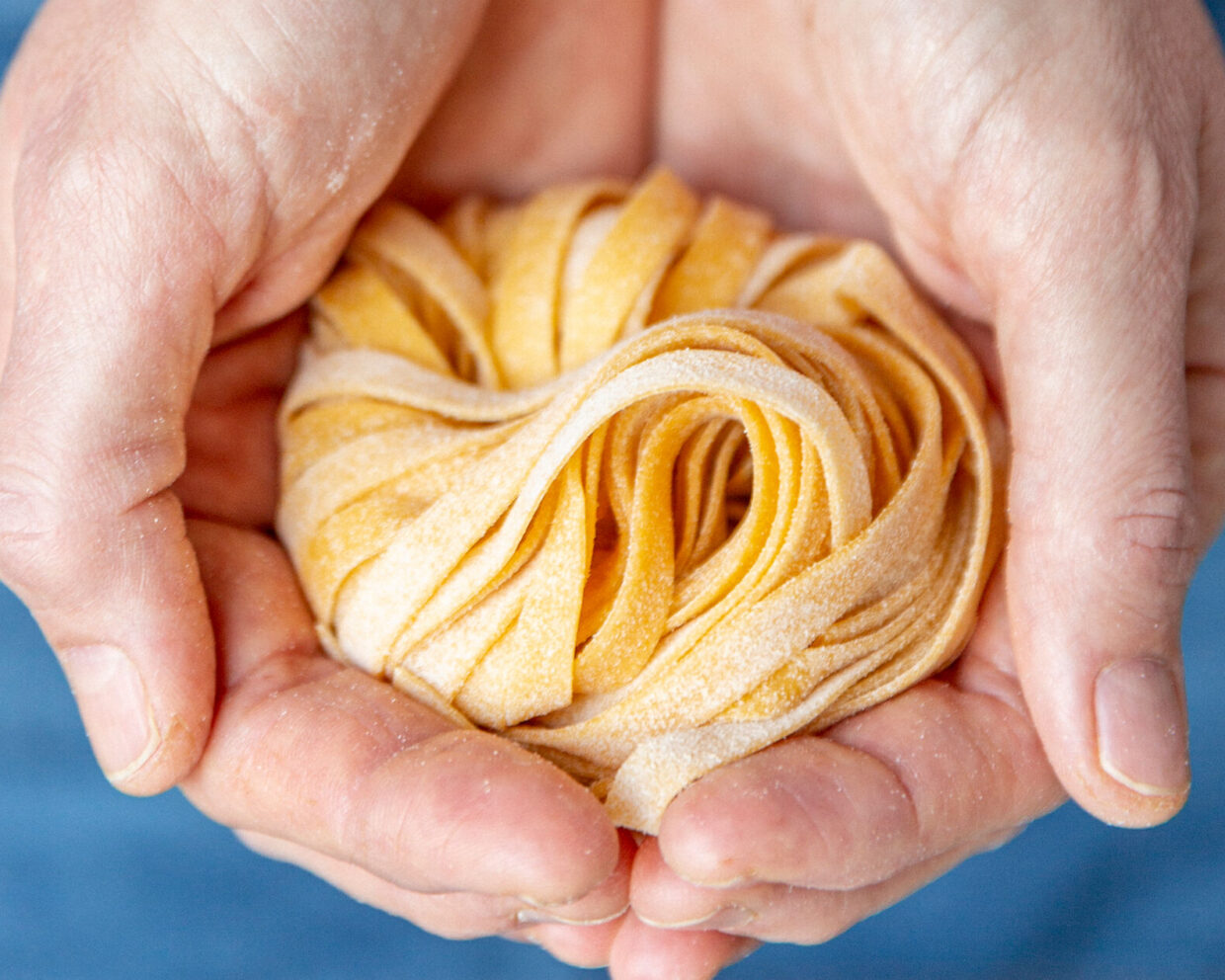
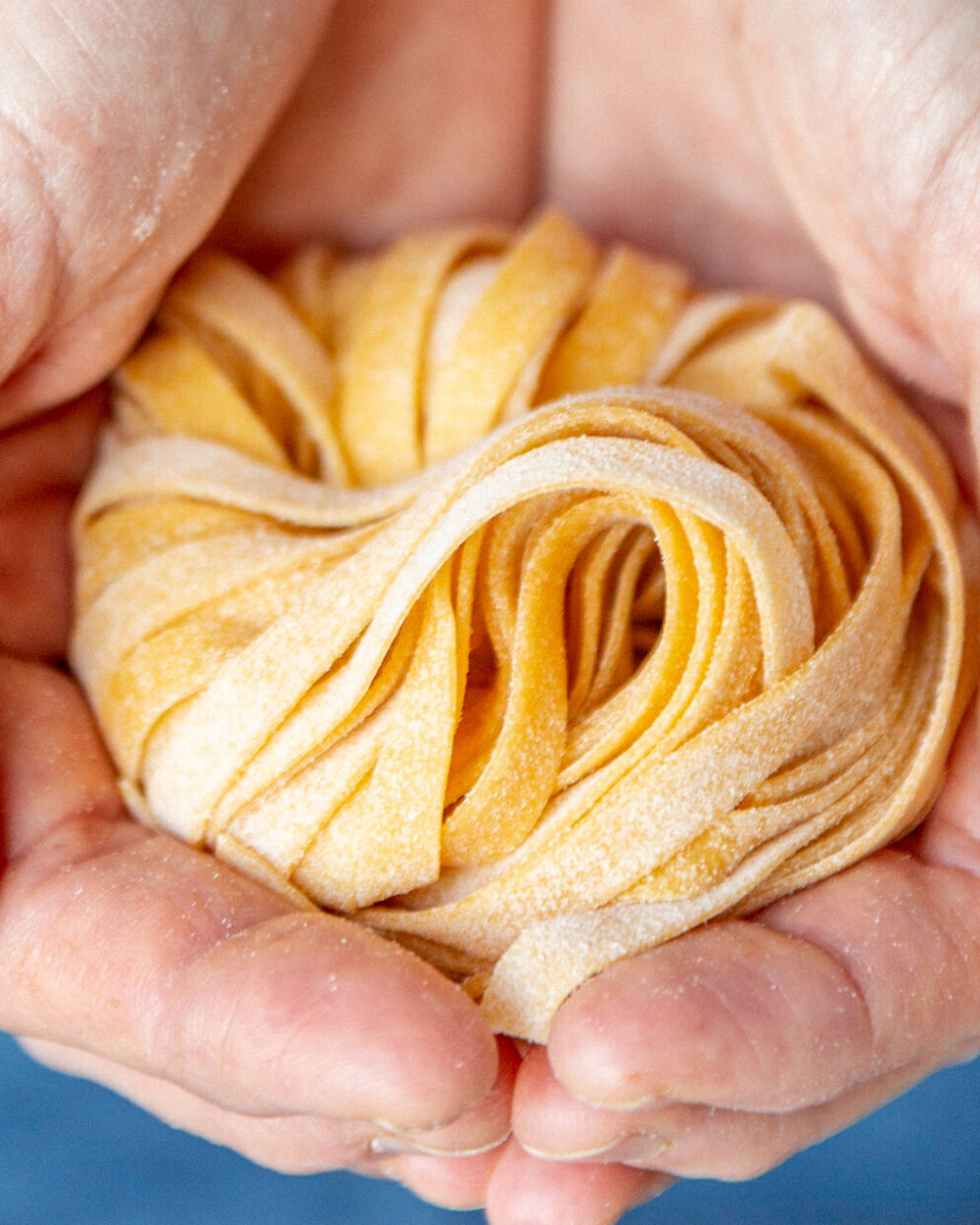
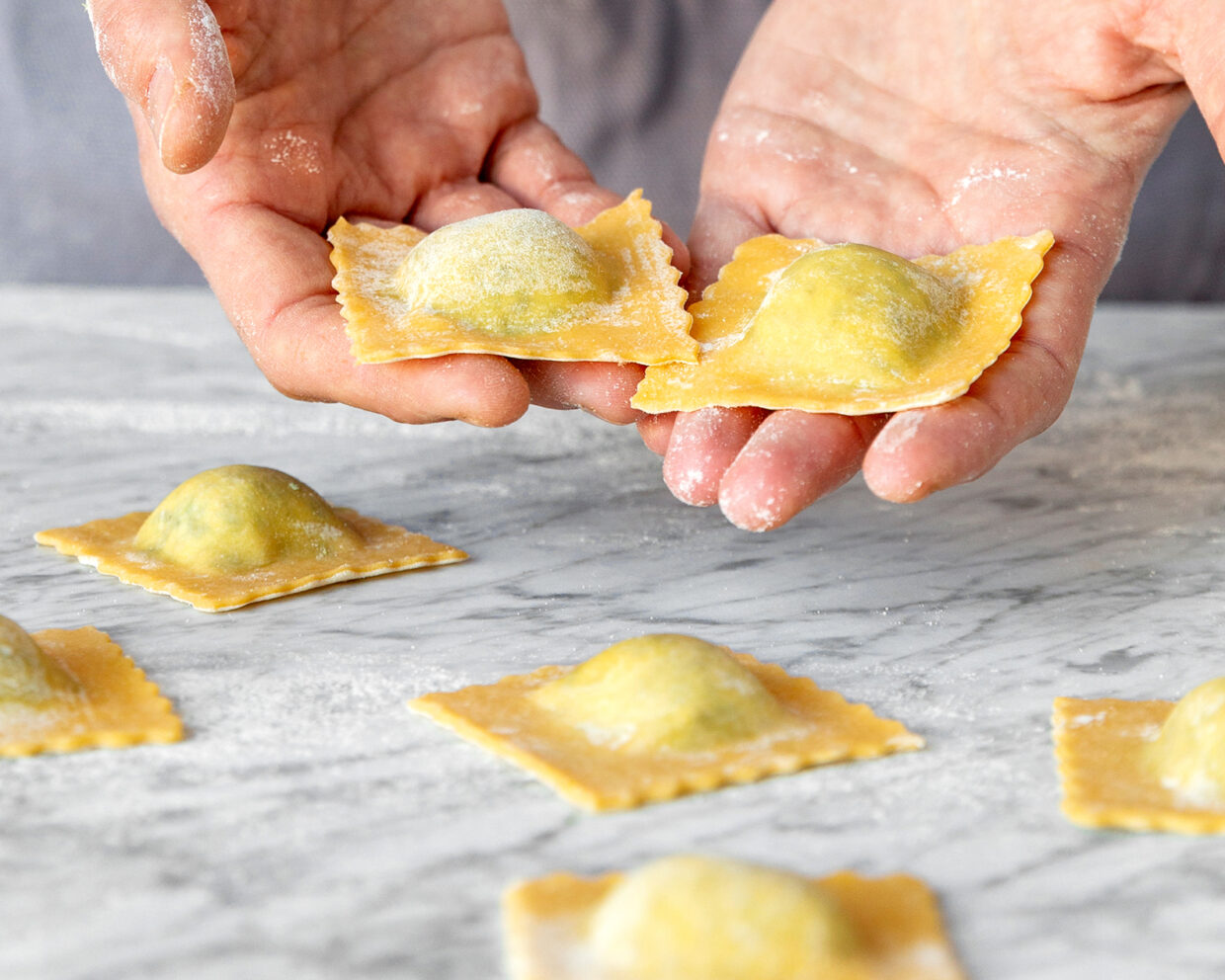
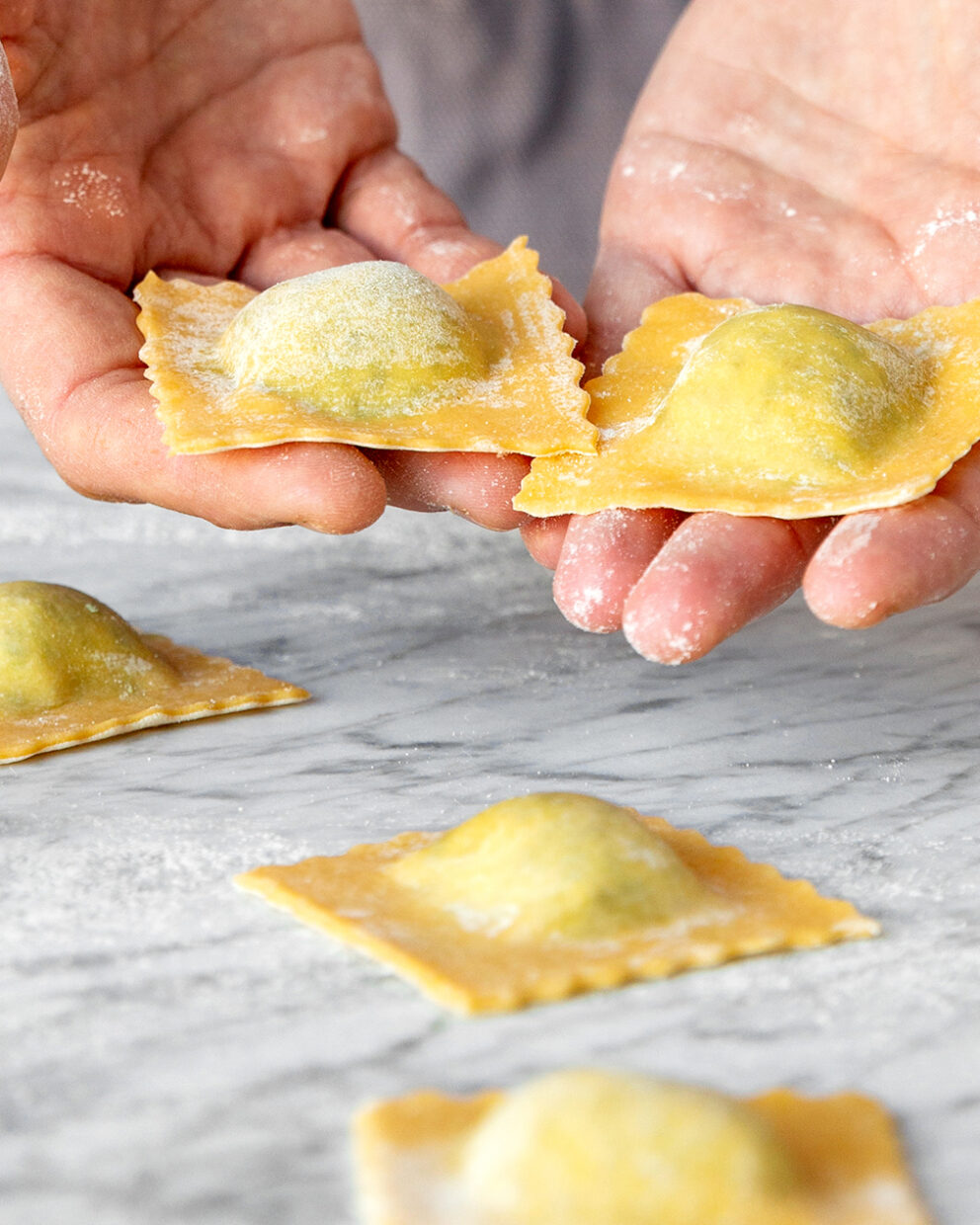
Want to share your thoughts? We're excited to hear what you think of the article. Tell us about your ideas, tips or questions! Leave a comment and share your knowledge with the community. Your opinion counts.
Write a comment